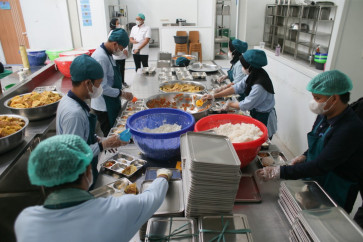Popular Reads
Top Results
Can't find what you're looking for?
View all search resultsPopular Reads
Top Results
Can't find what you're looking for?
View all search resultsRestoring free meals program as a child nutrition initiative
Considering that the free meals program has minimal socioeconomic impacts in the short term, it would be better to revert the program to its original design as a policy on improving child nutrition, which would have positive effects in terms of cost, food quality and fiscal management.
Change text size
Gift Premium Articles
to Anyone
D
uring a press conference on March 19, the National Economic Council (DEN) claimed that the free nutritious meal (MBG) program would create 2 million new jobs and reduce poverty from 9 percent to 5 percent.
The council’s statement is intriguing, however.
The press conference largely overlooked potential improvements in child nutrition from implementing the free meals program, which was originally designed to tackle child malnutrition, thereby promoting better economic conditions and social mobility in the long term. Instead, the event focused exclusively on the program’s short-term socioeconomic impacts.
Two reasons make it challenging to realize DEN's projections in practice.
First, regardless of how well-prepared its implementation, expanding the free meals program by increasing funding through cutting the state budget will not produce the desired economic benefits.
This is because the expansion of the program’s supporting sectors, such as restaurant services, agriculture and food processing, is financed by constraining other sectors, such as tourism and construction, by reducing the travel and infrastructure budgets.
The working paper underlying DEN’s press conference found that the potential impact of the free meals program on economic growth would be minimal, ranging from 0.01 to 0.26 percent. In this context, the council’s stated projections on employment gains and poverty reduction seem inconsistent.



















